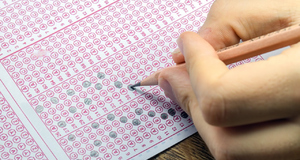Featured Article:Today's Non-Traditional Student: Challenges to Academic Success and Degree Completion
By
2016, Vol. 8 No. 03 | pg. 1/2 | »
IN THIS ARTICLE
KEYWORDS
AbstractNontraditional students represent a substantial proportion of those enrolled in higher education institutions. The purpose of this literature review is to identify (1) distinctions between traditional and nontraditional students and (2) factors that impact retention among nontraditional students. Age, selection of major among females, socio-culture, environmental factors and enrollment status were identified as barriers to degree completion. Proactive intervention as a possible strategy for improving academic success, and implications for higher education institutions are discussed. Higher education institutions should prioritize prevention and intervention programs to alleviate barriers to academic success among non-traditional students. Before the turn of the 20th century, colleges and universities were primarily populated by young, White male students, many of whom transitioned directly from high school, were enrolled full time, were dependent on others to provide financial support, and were not permanently employed (U.S. Department of Education, 2002). In addition to a burgeoning growth in diversity, post-secondary institutions have experienced a steady growth in the number of students with extended gaps between high school and college (Bean & Metzner, 1985; Donaldson & Graham, 1999; Merriam & Caffarella, 1991; Remedios & Richardson, 2013). By 2019, college entry by “adult learners” (age 25 and older) is expected to increase by up to 28% (Markle, 2015). The reasons vary, but are generally attributed to the needs of individuals to sustain employment with salaries that will afford a decent standard of living for themselves and their families (Hout, 2012).Contemporary criteria used to describe non-traditional students extend beyond delayed enrollment. According to Jones and Watson (1990), the sixties ushered in a multitude of political changes that resulted in an ever increasing diversification of traditional populations in higher education. Specifically, passage of federal legislation on the rights of females and persons of color, the declaration of the War on Poverty, and a general, inclusion oriented shift of American values collectively placed stronger societal emphases on equal opportunity. Subsequently, the demographic landscape on many college campuses became more diverse. Between 1976 and 2012, the percentage of Hispanic, Asian, and African American students rose by 11, 4, and 5 percent, respectively. The percentage of American Indian/Alaska Native students also increased but by a smaller margin (.2 percent). Concurrently, White student enrollment dropped from 84 to 60 percent (U. S. Department of Education, 2015). The term “non-traditional” student also expanded to include socio-culture (i.e., race and ethnicity), gender, enrollment type (e.g., full versus part-time; transfer), marital status and having dependents (Jones & Watson, 1990; U. S. Department of Education, 2002). To what extent do characteristics of non-traditional students impact college success within traditional learning contexts? Given the current structure and demands of traditional education, what has been left to question is the extent to which these non-traditional characteristics impact college success within traditional learning contexts. This paper aims to address this question in two ways. The first section serves as a precursor to the question of impact by describing distinctions between traditional and non-traditional students. This section also addresses how characteristics unique to the nontraditional student serve as academic attributes. We then present literature on barriers that place nontraditional students at risk for under-achievement and incompletion of their college degree. We conclude with a summary of findings and implications for change at higher educational institutions. Distinctions Between Traditional and Non-Traditional StudentsSocial and Academic InvolvementNon-traditional and traditional students possess differing perspectives on expectations for a social life in college. While traditional students make time for involvement in social activities, including club sports and Greek life, non-traditional students are more likely to invest time in enhancing the learning experience (Bean & Metzner, 1985). Consequently, the vocational nature of the nontraditional student places more emphasis on finding academic and career mentors. Social interests materialize at a slower rate and as time permits. MindsetResearch by Levine (1993) suggests that non-traditional students have more of a business mindset. The mindset comes with an expectation of consumer oriented services from higher education institutions compared to their traditional counterparts. As a result of competing for personal and professional priorities, non-traditional students expect efficient educational experiences that generate immediate monetary results. This means nontraditional students will shop around to find the best “educational” deal in order to save money and maximize learning outcomes. Because nontraditional students associate school with a higher quality of life, they tend to be more conscientious about the quality of their education. Donaldson and Graham (1999) found that nontraditional students sought out more faculty support when compared to traditional students. Nontraditional students were more likely to prioritize school work time to minimize conflicts with work and home obligations (Donaldson & Graham, 1999). Higher education institutions that fail to address the unique needs and expectations of non-traditional students receive sharp criticism from this demographic (Samuels, Beach & Palmer, 2012). Complaints range from long commutes for short classes, immaturity of the traditional student population, and lack of credits for previous coursework at other universities. In spite of these complaints it was noted that nontraditional students succeeded, mostly due in part to their motivation to provide financial aid and stability to their families. AgeOne of the most prevalent characteristics used to differentiate traditional from non-traditional students is age (Chung, Turnbull, & Chur-Hansen, 2014). The age range most frequently associated with traditional students is 18-25, and 26-45 for non-traditional students. However, evidence suggests that a growing number of students are entering (or reentering) college after retirement. A variety of characteristics associated with older ages may benefit non-traditional college students. Research suggests that maturity with age is associated with greater confidence and satisfaction, especially when students are managing academic responsibilities with family and career (Carney-Compton & Tan, 2002; Quimby & O’Brien, 2006). Age is also identified as a predictor for higher levels of motivation, emotional coping, and successful goal attainment (Bye, Pushkar, & Conway, 2007). Non-traditional students report higher levels of internalized motivation and goal achievement compared to traditional students (Lovell, 2014). Carney-Compton and Tan (2002) assessed the academic performance, psychological functioning, and support networks of full-time non-traditional students at a Canadian university. They discovered higher academic achievement among non-traditional (female) students, age 35 to 44, compared to traditional students, age 18 to 22. Gender and Socio-CultureOver the last 30 years, the number of females earning college degrees has generally outpaced that of males, but not across all academic domains. With little exception (e.g., psychology, biology and agricultural sciences) male enrollment continues to outnumber that of females in science, technology, engineering and math (STEM) (Allegrini, 2015; Gayles, 2014). While females receive over half of all bachelor’s degrees awarded, the number of STEM degrees awarded to males is double the amount awarded to females (National Science Board, 2012; Sax & Arms, 2008). Reasons for their non-traditional status in STEM is generally not tied to lack of effort or capability. Overall, females have been shown to perform better and work with more diligence when compared to their male counterparts (Chee, Pino & Smith, 2005). In addition, females tend to demonstrate higher levels of academic engagement (Hu & Kuh 2002) and have stronger motivations for academic endeavor (Tett, 2000). Barriers to Degree CompletionOf particular concern are the high attrition rates that plague non-traditional students (Goncalves & Trunk, 2014). According to the National Center for Educational Statistics (2011), nontraditional students have significantly lower retention and graduation rates when compared to their traditional counterparts. Thus, identifying barriers to college completion is imperative to reversing this trend. Proactive intervention, the strategies that address challenges before they negatively impact an entity, requires that academic institutions align their services with the needs of nontraditional students (Jeffreys, 2007). Solely identifying students at-risk for poor academic performance and non-completion may fall short of strengthening retention rates. An accurate appraisal of challenges faced by non-traditional students is necessary for understanding how to address the particular needs of this population. Factors Related to Gender and Socio-cultureSocial experiences in college have been shown to impede persistence in STEM majors among females (Gayles, 2014). According to Tinto (1993) students who have successful academic and social integration experiences at their institutions are more likely to persist. Academic and social integration involves interactions with faculty, academic administrators, and peers in ways that lead to intellectual development and meaningful connections to an institution (Wolf-Wendel, Ward, & Kinzie, 2009). However, when students experience a climate of exclusion or rejection, especially from their immediate learning environment (faculty, departments, peers), they tend to feel intellectually devalued and may seek out new environments that are more accepting and supportive. Females are affected by this phenomenon, as they face stereotype threats that arise from antiquated views about women in STEM (Beasley & Fischer, 2012). International students and students of color enrolled at majority White institutions (MWIs) encounter similar problems. As a result, a lack of trust or pressure to resolve academic challenges independently may affect their willingness to seek help from campus services or a broad circle of fellow students. Consequently, these students may lose out on the very support mechanisms put in place to facilitate the learning experience(Gary, King, & Dodd, 2004). Establishing interventions that accommodate pervasive stressors exclusive to students of color may improve the psychological functioning and support networks of those students. Environmental FactorsNontraditional students report that stress resulting from environmental factors poses one of the biggest challenges to academic achievement and degree completion. Environmental factors include finances, emotional support from family, domestic responsibilities (i.e., dividing one’s time and resources to care for immediate and extended family), housing, child care arrangements, family stability, employment demands, transportation needs, and transferring from a 2 to 4 year college (Jeffreys, 2007; Bean & Metzner, 1985). The pressure of balancing work, family responsibilities, and other life circumstances adds a great deal of emotional strain to the process of completing a degree. This is especially the case for female adult learners with dependents. Conversely, nontraditional female students report higher levels of life satisfaction than traditional students of both genders (Carney-Compton & Tan, 2002). Full vs. Part-Time EnrollmentThe length of time it takes to complete a degree can impact degree attainment (Donhardt, 2013). According to the National Center for Education Statistics (n.d.), the median time for completing a bachelor’s degree is 4.33 years. This timeframe is based on full time enrollment. However, a substantial number of non-traditional students do not attend school full time. Research suggests that role conflict (e.g., parenting and school enrollment) makes a difference. Quimby and O’Brien (2006) found that a significant number of female undergraduate students with children tend to enroll part time. When compared to other student populations, part time students with children are at higher risk for non-degree completion (Taniguchi and Kaufman, 2005). Role conflict comes in multiple forms (e.g., spouse, parent, caregiver of children and aging parents, employee) Non-traditional students often have multiple responsibilities that prevent the possibility of full time enrollment (Taniguchi & Kaufman, 2005). Less time spent on campus decreases opportunities to seek support and build relationships with instructors and peers. Enrollment status affects financial aid eligibility. Students who are not enrolled full time qualify for little, if any, tuition assistance (McDaniel & Graham, 2001; Taniguchi & Kaufman, 2005). As a result, tuition can become a financial burden for the part time student when compared to their full time counterparts. Taking on multiple responsibilities, as well as tuition expenses, place students at risk for feeling overwhelmed and distressed, making it a challenge to perform well in school.Continued on Next Page » Suggested Reading from Inquiries Journal
Inquiries Journal provides undergraduate and graduate students around the world a platform for the wide dissemination of academic work over a range of core disciplines. Representing the work of students from hundreds of institutions around the globe, Inquiries Journal's large database of academic articles is completely free. Learn more | Blog | Submit Latest in Education |


















